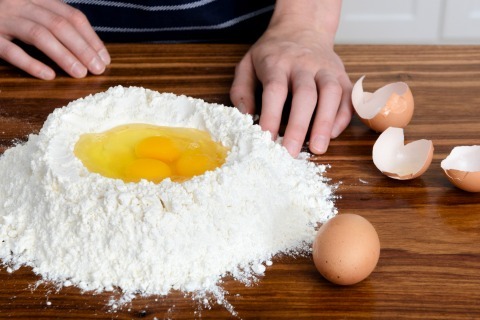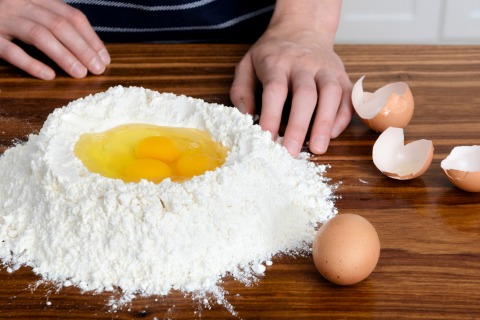How To Mix Bread Dough
We may receive a commission on purchases made from links.
Though it may seem simple, there's a real science to mixing bread dough. When flour and water are mixed, gluten forms, giving bread its characteristic chewy texture. Mixing the dough encourages more gluten to form — this means that bread's texture relies on the correct mixing of the dough.
Also, since yeast rises best when warm (but not hot) the mixing bowl and ingredients used should be warmed. The warmth of your hand is ideal for stirring, though a wooden spoon may be used. Anne Willan's LaVarenne Pratique, an essential culinary reference book for both novice and expert cooks, shares these tips for mixing bread dough.
Click here for our best yeast bread recipes
Sift the flour on to the work surface with salt and sugar. Make a large well in the center of the flour.
(Credit: Shutterstock)
Pour in the dissolved yeast and liquids that your recipe calls for. Alternatively, add the "sponge" if your recipe calls for it. Start mixing in the flour with your fingertips.
(Credit: Shutterstock)
Gradually draw in all the flour, mixing with both hands or using a pastry scraper. If the dough is very sticky, add more flour.
(Credit: Shutterstock)
The dough should be soft and slightly sticky. Scrape up crumbs from the work surface with a pastry scraper or spatula.
For recipes and more tips and techniques, visit LaVarenne's website or buy a digital copy of LaVarenne Pratique.
Kristie Collado is The Daily Meal's Cook Editor. Follow her on Twitter @KColladoCook.

